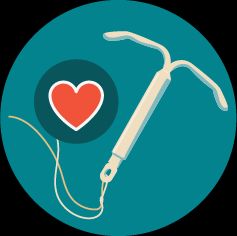For many people, having an IUD removed is a quick procedure performed in a doctor’s office. But if the IUD has attached to your uterine wall, it may require a more involved removal.
An IUD is a small, T-shaped device that’s inserted into the uterus to prevent pregnancy.
It’s one of the most effective forms of reversible birth control, with fewer than 1 in 100 people becoming pregnant each year.
There are two types of IUDs: copper and hormonal.
In the United States, the copper IUD is known as ParaGard. This T-shaped device contains a stem wrapped with copper wire and two copper sleeves.
These parts release copper into the uterus for up to 10 years, preventing sperm from reaching the egg.
Hormonal IUDs release progestin into the uterus, thickening cervical mucus to block sperm from reaching and fertilizing an egg. The hormone can also prevent eggs from being released and thin the uterine lining to prevent implantation.
There are four different hormonal IUDs. Mirena and Liletta last the longest (up to 8 years). Kyleena works for up to 5 years, and Skyla works for up to 3 years.
A healthcare professional can remove your IUD at any time. You may consider removing it because:
- You’re trying to get pregnant.
- You’ve had it for the maximum amount of time recommended, and it needs to be replaced.
- You’re experiencing prolonged discomfort or other undesirable side effects.
- You no longer need this method of birth control.
For most people, the removal of an IUD is a simple procedure performed in a doctor’s office. To remove the IUD, your healthcare professional will grasp the threads of the IUD with ring forceps. In most cases, the arms of the IUD will collapse upward, and the device will slide out.
If the IUD doesn’t come out with a slight pull, your healthcare professional will remove the device using another method. You may need a hysteroscopy to remove the IUD if it has attached to your uterine wall.
During this procedure, a doctor or other healthcare professional widens your cervix to insert a hysteroscope. The hysteroscope allows small instruments to enter your uterus. You may require anesthesia for this procedure. It can take between five minutes to an hour to complete a hysteroscopy.
Recent research also indicates that an ultrasound-guided removal is an effective way to take out an IUD that won’t come out with forceps. This procedure can be less invasive than a hysteroscopy and more cost-effective.
Once you have an IUD placed, you’re protected against pregnancy for three to 10 years. The duration that your IUD protects against pregnancy depends on the type of IUD that you choose.
You’ll have a follow-up appointment about a month after the IUD is inserted. During this appointment, your healthcare professional will make sure the IUD stays in place and hasn’t caused an infection.
You should also confirm that your IUD remains in place on a monthly basis. After insertion, its strings will hang down into your vaginal canal. You can verify that the IUD is still in place by checking for these strings. You shouldn’t be able to touch the IUD.
You should contact a healthcare professional if:
- you have unusual bleeding
- penetration is painful
- you can feel other parts of the IUD in your cervix or vagina
If you have a copper IUD, you may experience heavier periods accompanied by menstrual cramping. This is usually temporary. Many people find that their cycles regulate two to three months after insertion.
If you have a hormonal IUD, you may find that your period is lighter or disappears.
Other side effects can include:
IUDs don’t protect against sexually transmitted infections (STIs), so it’s important to use a barrier method.
There are many birth control options available. If you decide to use an IUD for contraception, work with a healthcare professional to figure out which IUD best suits your needs.
After your IUD is inserted, be sure to check the strings regularly. Notify a healthcare professional if you notice that the IUD has moved or if you experience any side effects.
If your IUD needs to be removed for any reason, the procedure should be relatively straightforward at your healthcare professional’s office.





